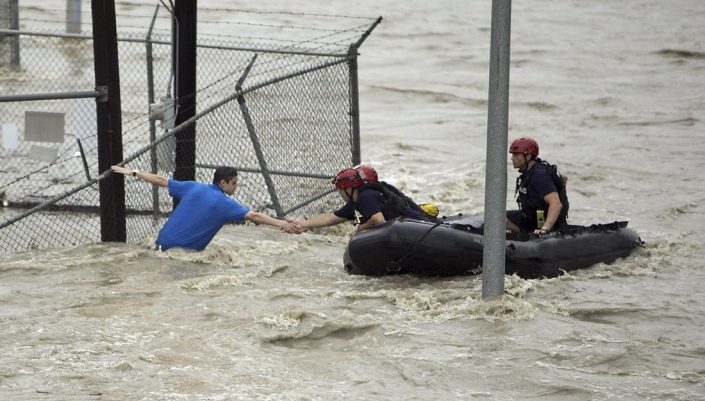Swift water rescues: Study examines why some people ignore indicators

Image: School of Public Health
For the 27 counties of Texas’ “Flash Flood Alley,” sudden floods are a continual threat. Yet many people still put themselves into dangerous situations by driving or walking into floodwaters.
A new study by the Texas A&M School of Public Health looked at data on flooding fatalities and rescues from 2005 to 2014 to discover patterns that could guide future research and help public safety efforts.
“Rainfall events of the type that cause flash floods are difficult to predict, but extreme rainfall has become more frequent since 1991, and future climate change could increase the frequency and severity of storms and flooding,” said Jennifer Horney, interim head and associate professor in the Department of Epidemiology and Biostatistics at the School of Public Health. “In addition, Texas’ population is projected to double by 2050, exposing more people to the risks of flooding and bringing land cover and land use changes, such as paved surfaces, that could further exacerbate the problem.”
During flash floods, first responders often find themselves engaging in swift water rescues, which involve floodwaters moving faster than 1 knot, or approximately 1.2 miles per hour.
The study was conducted with the Texas Department of State Health Services as part of an EpiAssist project, a service-learning program created by Horney that partners graduate students with health departments and agencies.
Published in the journal Climate Risk Management, the study analyzed swift water rescue data from the Texas fire marshal’s office along with U.S. census population information and data on flood fatalities from the National Oceanic and Atmospheric Administration.
During the 2005 to 2014 reporting period, there were more than 3,000 swift water rescues in Texas. Half of these were in the Flash Flood Alley counties and about 86 percent occurred in urban counties. The yearly numbers of rescues varied widely, with the most happening in 2007 and the fewest in 2011. The number of rescues roughly coincided with yearly precipitation totals.
Among the findings:
* Higher rates of swift water rescue in urban areas compared with rural areas points to a need for further research on the differences between these types of settings.
* More information is needed on demographic factors to determine how best to target education campaigns.
*As Texas’ population grows and becomes more urbanized and as flood frequency increases due to climate and land use factors, swift water rescues may become more common than in the past. This demonstrates a potential need for specialized training and equipment for fire departments that would respond to flood emergencies.

